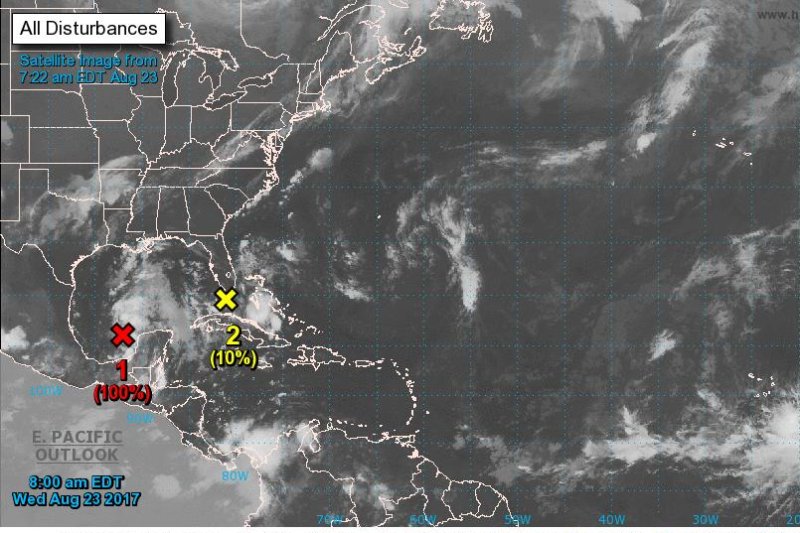Anadarko Petroleum pulls staff from some of its facilities in the Gulf of Mexico as Harvey starts to reform in the region. Image courtesy of the U.S. National Hurricane Center
Aug. 23 (UPI) -- With inclement weather brewing in the Gulf of Mexico, Anadarko Petroleum said it pulled non-essential staff from its offshore facilities.
The National Hurricane Center in Miami, Fla., said there are indications that what's left of Tropical Storm Harvey could redevelop into a tropical depression.
"Harvey could also produce storm surge and tropical storm or hurricane force winds along portions of the Texas coast later this week, and Tropical Storm or Hurricane Watches could be required later today for portions of the coast of northeastern Mexico, Texas, and southwestern Louisiana," the forecast read.
Anadarko Petroleum operates 10 facilities in the deep waters of the Gulf of Mexico. As a precautionary measure, the company said it pulled non-essential staff from four of those operations.
"Although, there have been no impacts to production at this time associated with the weather, we are prepared to shut in our facilities and evacuate remaining personnel if necessary to ensure safety and protect the environment," the company stated.
British energy company BP, which said it was closely monitoring storm activity in the region, had no reports on its activity from its regional storm center. BP operates four production facilities in the Gulf of Mexico.
The U.S. Energy Information Administration estimates total average oil production for the year at 9.3 million barrels per day, making it one of the world's largest oil producers. The U.S. Gulf of Mexico accounts for about 20 percent of that total. Offshore oil production is on pace to increase nearly 9 percent next year to about 1.85 million barrels per day.
Franklin bounced along the western Mexican coast in early August, hitting the country twice as a Category 1 hurricane. Mexican refiners along the country's western coast were relatively spared by the storm.
The 2017 hurricane season runs from June 1 through Nov. 30.















